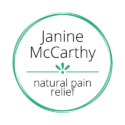How to clear stress from your body
So it’s the end of another year. I don’t know about you, but I can still feel the 2022 stress hanging around in my body.
It shows up as tension and a mild aching below my ribs that I can’t quite let go, and feeling tired even in the mornings.
It’s essential to clear stress from our bodies so we can clear it from our minds, so I’m taking some time in this liminal ‘nothing’ week between the crazy Xmas and New Year intensities to release my pressure valve.
How?
First, I’m returning to my favourite book of the year, Burnout: solve your stress cycle by Emily and Amelia Nagoski. I really can’t recommend it highly enough if you have stress stored in your body too…..which is, um, all of us nowadays!
Here are their recommendations for releasing stress:
- ANY physical activity is ‘the single most efficient strategy for completing the stress response cycle’. It’s ‘what tells your brain you have successfully survived’ whatever threats you’ve experienced. So walk, run, cycle, dance in your lounge room like nobody’s watching, or just shake your whole body for a couple of minutes like a deer that’s just out-run a lion. You’ll feel SO much better – do it daily, if you (like most people) get re-stressed everyday.
- Slow breathing – deep, slow breaths with a longer exhale helps your brain and body switch out of fight/flight/freeze and into rest/digest/restore, where all healing and recovery can happen.
- Positive social interaction – a brief, friendly chat with a cashier at the shops, your coffee barista, or a friendly neighbour helps to reassure your brain/body that the world is a safer place.
- Having a big belly laugh with someone – helps with social bonding and turns down the volume on the stress response, relaxing muscles and sending good vibes through body and brain.
- Affection – physical or not, with someone you love and trust who loves and trusts you. Try a 20 second hug, which can ” change your hormones, lower your blood pressure and heart rate and improve mood” and even increase oxytocin, the social-bonding hormone.
- Having a good cry – it might not solve problems but it completes the stress cycle in your body so you can recover physically. Turn on your favourite ten-tissue movie to get your tears flowing!
- Creative expression – doing anything creative can be a great way to express and release big emotions in a socially acceptable way.
Deep Rest in 15 Minutes
And my other go-to technique for releasing stress from my body is something I call the Deep Rest technique – try it today:
Lie on your back on the floor with your legs up on the couch (or on the bed with a pile of 4-5 pillows), rest your hands on your belly and breathe slowly and deeply for 15 minutes.
If you need help with more persistent tension and pain, book your appointment for an Ortho-Bionomy session here and start 2023 feeling great.
If you’d like to support my work with a regular or one-off contribution, head over here






